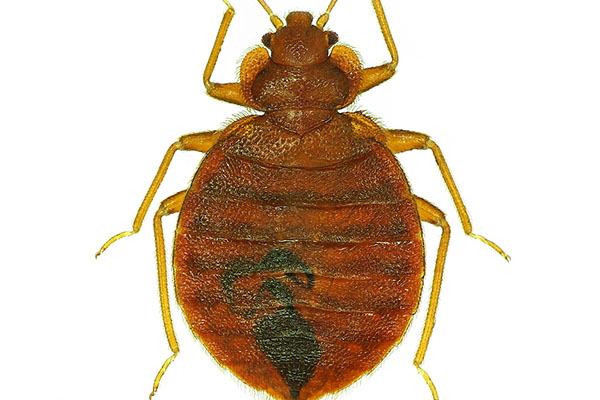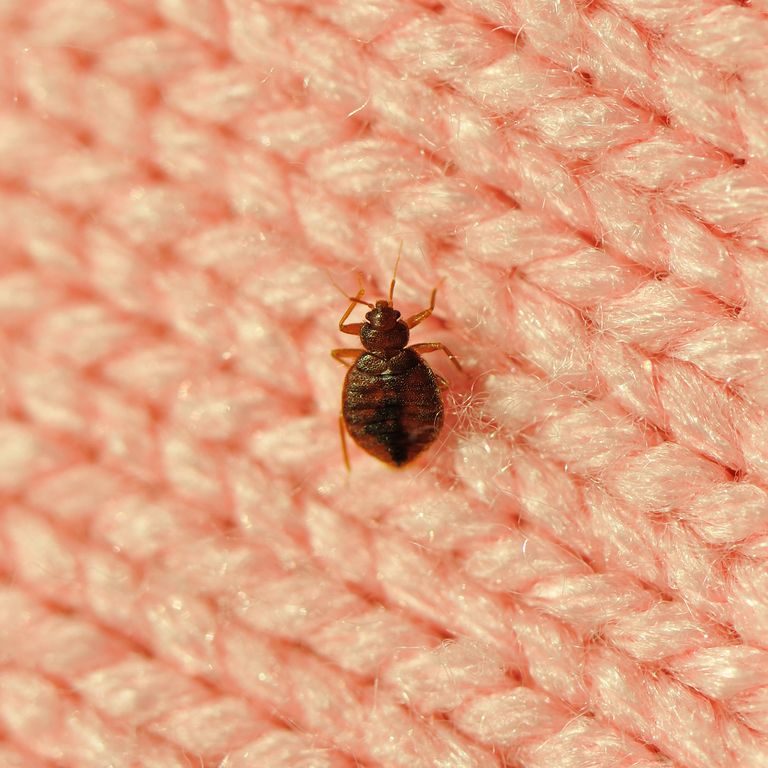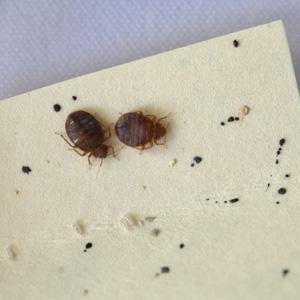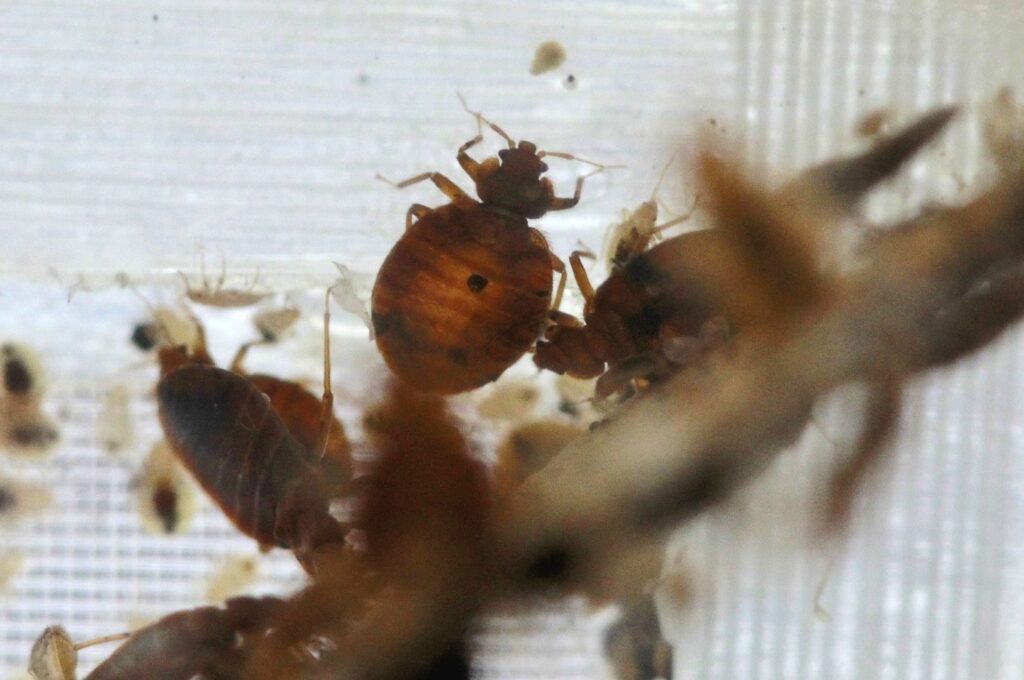Bed bug
Are bed bug attacks a sign of dirty living conditions or living in older homes/building, or is anybody at risk?
Infestations of common bed bugs, are not directly related to sanitation levels. The cleanest living area can have a very large infestation , and improving sanitation alone will not eliminate an established bed bug population. Cluttered conditions can offer the bugs a lot of excellent harborages very near their human blood-meal hosts. Almost anyone is at risk of having an infestation if bed bugs are brought into their home.
Can you get anything serious from a bed bug bite? Are there physical/physiological effects if you are living with bed bugs?
According to scientists, naturally occurring populations (infestations) of common bed bugs have been documented to have at least 28 different kinds of human pathogens in their bodies. However, very careful and detailed studies by both entomologists and medical doctors have never shown that those bed bugs could transmit (infect) even one of those pathogens to humans or lab animals. They simply have not been shown to transmit any human disease known so far.
If you are a home owner and have an infestation, and you do all the preliminary cleaning and self-help steps, is an exterminator really necessary? Are there sprays/home cures?
Most people who work in urban pest control in the U.S. would prefer to be called Pest Management Professionals (PMPs) rather than exterminators. Unfortunately (as stated above), cleaning alone will not usually have much impact on an established bed bug population. Successful programs to eliminate these bugs require detailed knowledge of their biology and exact harborage (hiding) locations determined by thorough inspection. PMPs must also know a lot about the strategies, techniques and products which can be used effectively, safely, and legally to control bed bugs.
Why are the bugs hard to kill?
Common bed bugs are small, thin, and can hide deep in very narrow cracks. They are mainly active at night. They will routinely travel as far as a 20-foot radius from their hiding places (and back) in one night to take a blood meal. Bed bugs are very adaptable. They move much quicker, and can pass through much smaller openings or cracks, than most people expect
If you don’t have an infestation in your home, are there things you can do to prevent one?
Take steps to try to avoid picking up bed bugs from hotels, hostels or any other sources when you or your family members travel, even to local destinations (e.g., within the same or a nearby city). Do not buy used furniture (especially bedding items or upholstered items), or at least do not bring them into your home until you, or a competent expert, have inspected them carefully for any signs of bed bugs (live or dead bed bugs, their eggs, fecal spots, or cast skins).

BED BUG HEAT TREATMENT COST
Learn about bed bug heat treatment costs and considerations. While costs can vary, the right professionals can help make sure your bed bug treatment is worth every penny
Bed Bug Heat Treatment: Cost and Considerations
From your mattress and box spring to your carpet and baseboards, bed bugs can nest almost anywhere in your bedroom. In fact, most bed bug infestations occur within a few feet of their human blood meal host, like your bed or other furniture. Not to mention, they can hide in crevices as small as nail indentations in your wall. As so, bed bugs can be hard to kill, no matter how prepared you think you might be. That’s why a bed bug heat treatment can be one of the most effective solutions. Costs will vary depending on the type of treatment used and the size of the infestation.
Can a Hot Box Kill Bed Bugs?
By placing items such as shoes, dry cleaning, blankets, bags of clothing or even luggage into a hot box, sustained heat is used to kill bed bugs. Generally, a dryer is used for clothing and linens, and a heat chamber is used for the items that can’t be put into a dryer. In both instances, the heat penetrates small crevices that cannot be inspected. Lethal temperatures for bed bugs range from 117–122° degrees Fahrenheit. The walls of hot boxes reach a higher temperature than the suggested lethal range, though, to permeate the belongings placed within. This can help kill all bed bugs in all their life cycle stages.
Will Steam Kill Bed Bugs?
Will steam kill bed bugs? In short, yes — steam is another form of heat that can help kill bed bugs, larvae and eggs. Steam treatment is no more labor intensive than other methods. However, it’s not meant to penetrate materials deep enough to kill hidden bed bugs.
Can Dryers Help to Kill Bed Bugs?
As discussed above, regular residential clothes dryers can also destroy bed bugs. In fact, the washing machine and hot soapy water can help kill them. There are many items that cannot be washed, though. Instead, these items may be able to run through a dryer cycle without damage. This includes stuffed animals and “dry clean only” items. The heat of the clothes dryer alone can kill bed bugs.

How to Get Rid of Bed Bugs for Good, According to Experts Who Study Them
Thinking you may have a pest problem is never fun, but most homeowners dread one infestation in particular: bed bugs. It’s understandable why: Bed bugs can be difficult—not to mention expensive—to get rid of.
What are bed bugs, anyway?
A bed bug is what is called a blood-feeding ectoparasite, which means its only source of food is our blood, a professor of entomology at the University who specializes in bed bug biology. That need for our blood is why bed bugs are often found exactly where their name implies: our beds. “They like to live near the host, meaning in our bedrooms, near our beds—as close as they can get to where we sleep as is possible,” says
How to get rid of bed bugs the right way
It’s particularly difficult to get rid of bed bugs because they’re resistant to a lot of insecticides, including many of those you’ll find in bed bug treatments at the hardware store
Prevent bringing them home.
The key to avoiding a nasty bed bug situation is to identify them before you bring them into your home. But where do bed bugs come from? They are often brought into the home after travel, where the bed bugs might have crawled into your suitcase or backpack at a hotel, says
Where do bed bugs hide?
Since they’re most likely to be on the mattress, start by looking there first. Pull back the sheets and check the corners of the mattress with special focus on the cord that goes around the mattress—a favorite spot for bed bugs, according

Things to Know about Bed Bugs
Not to mention, they’re just plain gross. However, armed with the right knowledge, you can prevent and battle bed bugs effectively. Here, we’ll be sharing the top five things you need to know about bed bugs:
What are bed bugs?
Where are bed bugs typically found?
What are the symptoms of bed bug bites?
What are the treatment options for bed bug bites?
How do I prevent bed bug bites?
What Are Bed Bugs?
bed bugs are insects that are generally:
About the size of an apple seed.
Long and brown with a flat, oval-shaped body when not recently fed.
Balloon-like, reddish-brown and elongated when recently fed.
Smelly, with a “musty-sweetish” odor.
Bed bug nymphs (young bedbugs) are smaller, translucent and whitish-yellow.
Bed bug eggs are tiny and pearl-white.
Bed bugs are a nuisance to humans because they prefer to feed on human blood, and in the process cause itchy, uncomfortable bites as well as a great deal of distress. The good news is that bed bugs are not known to spread disease. The bad news, though, is that bed bug numbers are only rising in the U.S.
Where Do Bed Bugs Hide?
survey from the National Pest Management Association, pest professional report the most common bed bugs dwellings are single-family homes (91 percent of pest professionals report this), apartments/condos (89 percent of pest professionals report this) and hotels/motels (68 percent of pest professionals report this )
However, bed bugs can also be found in:
Nursing homes (59 percent of pest professionals report this).
Schools and daycare centers (47 percent “’).
Office buildings (46 percent “”).
College dorms (45 percent “’).
Hospitals (36 percent “’).
Public transportation (19 percent “’).

How to avoid bringing bedbugs home from vacation
They creep, they crawl, and they just might be in your hotel room. And worse, they could be coming home with you. Bedbug infestations can occur at any time, but experts say it’s wise to be extra wary of the critters during peak travel times — like summer, for instance. Hiding in cracks and crevices, the bugs are good hitchhikers and could latch onto luggage and other belongings.
“They’re not discriminating travelers,” said Jim Fredericks, chief entomologist for the National Pest Management Association. “They don’t discriminate between a first-class resort or a low-rate motel. You could encounter them anywhere.”
Inspect your hotel room. Before settling in, it’s worth doing a quick scan of the bed and any couches or armchairs. Look at the folds and seams of the mattress, recommended, as little dark stains could be a sign of an infestation. If it’s a pretty bad case, you might even be able to see the bugs’ castaway shells or pearly white eggs.
Look closely at wooden headboards. Although bedbugs are typically associated with clinging to fabric, they can use their claws to grip and climb bed frames as well. Take a peek behind the headboard if possible, as the critters often hide in cracks
“This isn’t necessarily fun, but if you find a bug in your bed, pick it up and put it in a plastic bag or one of those glasses they have in your hotel room,” she said. “Keep it there so you can have proof that there were bedbugs in the room.”